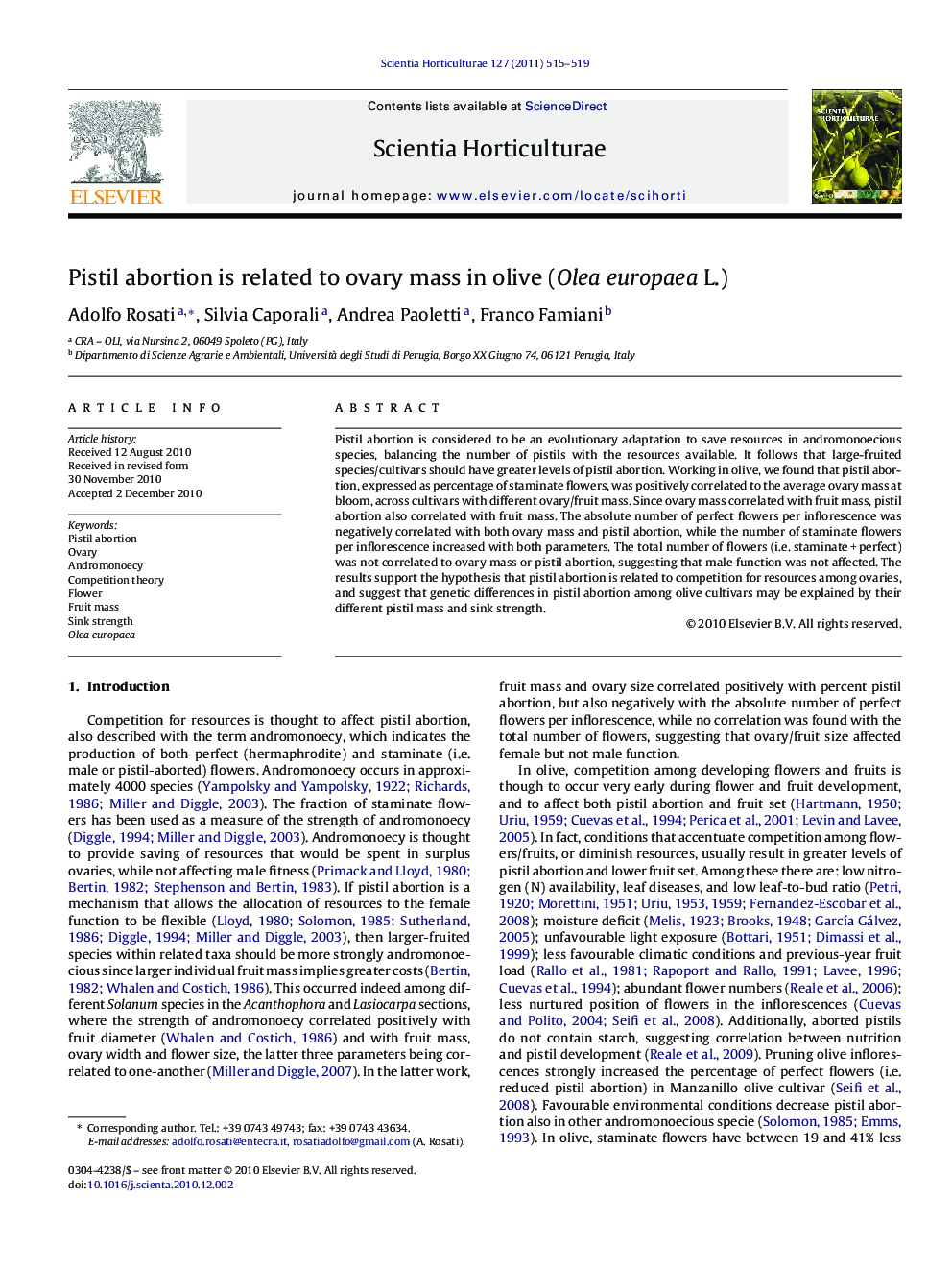| کد مقاله | کد نشریه | سال انتشار | مقاله انگلیسی | نسخه تمام متن |
|---|---|---|---|---|
| 4568381 | 1331297 | 2011 | 5 صفحه PDF | دانلود رایگان |

Pistil abortion is considered to be an evolutionary adaptation to save resources in andromonoecious species, balancing the number of pistils with the resources available. It follows that large-fruited species/cultivars should have greater levels of pistil abortion. Working in olive, we found that pistil abortion, expressed as percentage of staminate flowers, was positively correlated to the average ovary mass at bloom, across cultivars with different ovary/fruit mass. Since ovary mass correlated with fruit mass, pistil abortion also correlated with fruit mass. The absolute number of perfect flowers per inflorescence was negatively correlated with both ovary mass and pistil abortion, while the number of staminate flowers per inflorescence increased with both parameters. The total number of flowers (i.e. staminate + perfect) was not correlated to ovary mass or pistil abortion, suggesting that male function was not affected. The results support the hypothesis that pistil abortion is related to competition for resources among ovaries, and suggest that genetic differences in pistil abortion among olive cultivars may be explained by their different pistil mass and sink strength.
Research highlights▶ Pistil abortion was related to ovary mass across different olive cultivars. ▶ Ovary mass and abortion were not related to number of flowers per inflorescence. ▶ They were related to the number of staminate and perfect flowers. ▶ Pistil abortion fine tunes maternal investments with available resources. ▶ Genetic differences in pistil abortion may be due to competition.
Journal: Scientia Horticulturae - Volume 127, Issue 4, 10 February 2011, Pages 515–519